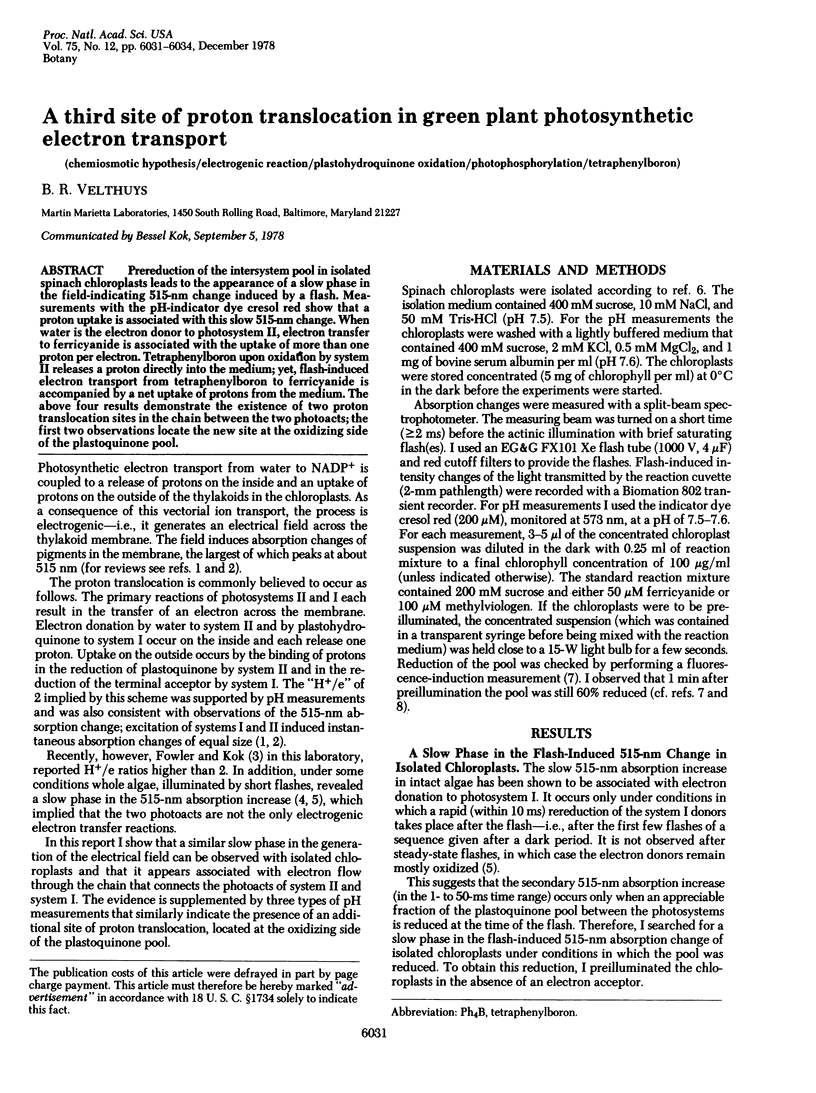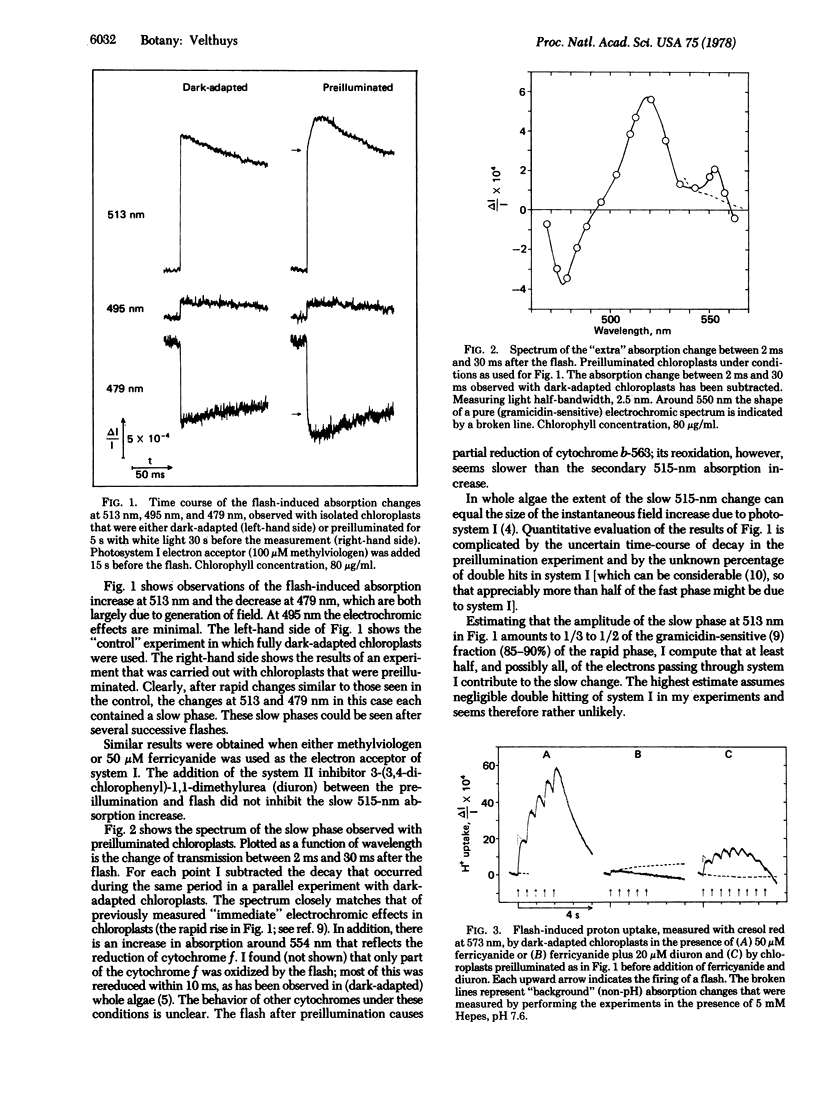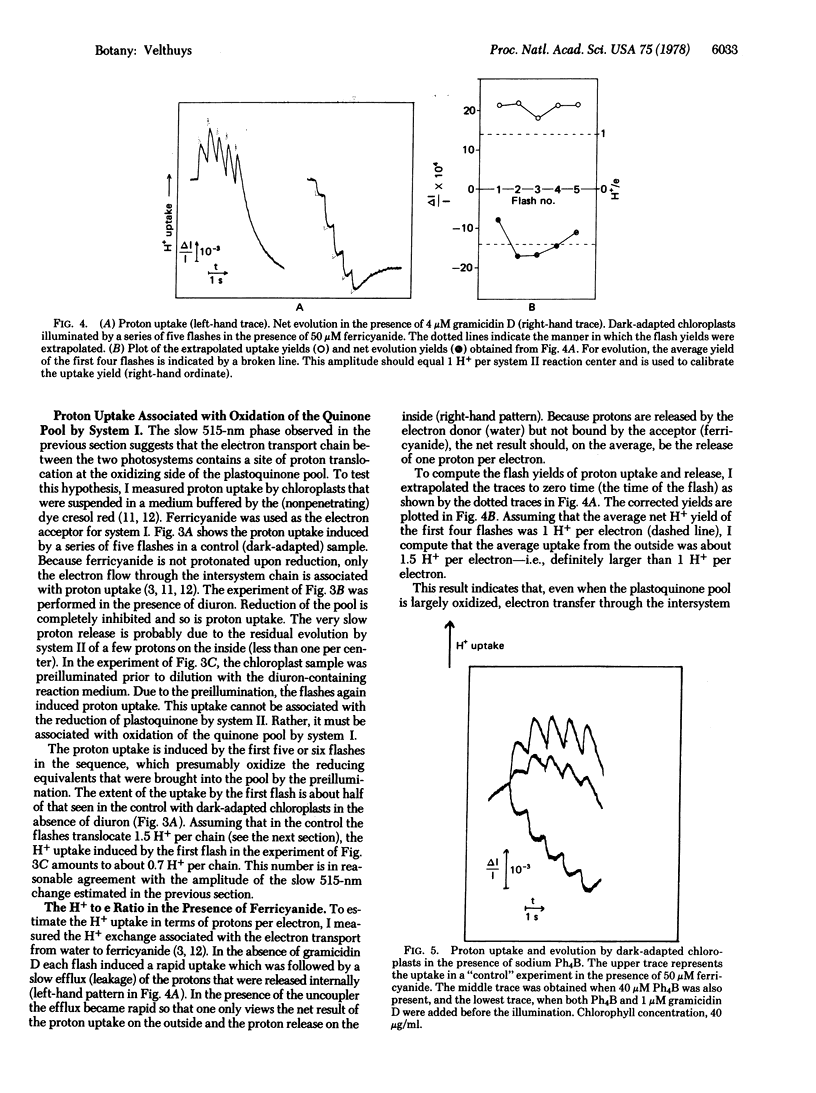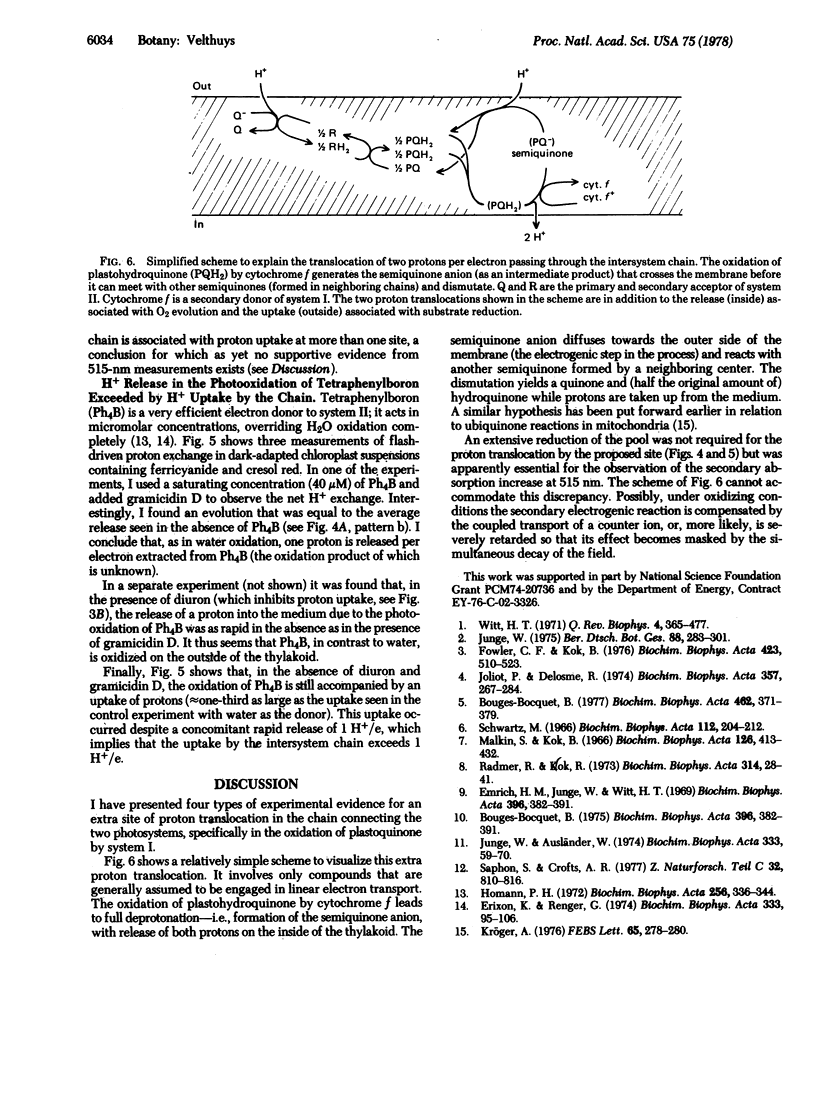Abstract
Prereduction of the intersystem pool in isolated spinach chloroplasts leads to the appearance of a slow phase in the field-indicating 515-nm change induced by a flash. Measurements with the pH-indicator dye cresol red show that a proton uptake is associated with this slow 515-nm change. When water is the electron donor to photosystem II, electron transfer to ferricyanide is associated with the uptake of more than one proton per electron. Tetraphenylboron upon oxidation by system II releases a proton directly into the medium; yet, flash-induced electron transport from tetraphenylboron to ferricyanide is accompanied by a net uptake of protons from the medium. The above four results demonstrate the existence of two proton translocation sites in the chain between the two photoacts; the first two observations locate the new site at the oxidizing side of the plastoquinone pool.
Keywords: chemiosmotic hypothesis, electrogenic reaction, plastohydroquinone oxidation, photophosphorylation, tetraphenylboron
Full text
PDF



Selected References
These references are in PubMed. This may not be the complete list of references from this article.
- Bouges-Bocquet B. Cytochrome f and plastocyanin kinetics in Chlorella pyrenoidosa. II. Reduction kinetics and electric field increase in the 10 ms range. Biochim Biophys Acta. 1977 Nov 17;462(2):371–379. doi: 10.1016/0005-2728(77)90135-9. [DOI] [PubMed] [Google Scholar]
- Bouges-Bocquet B. Electron transport in photosystem I in spinach chloroplasts. Biochim Biophys Acta. 1975 Sep 8;396(3):382–391. doi: 10.1016/0005-2728(75)90144-9. [DOI] [PubMed] [Google Scholar]
- Fowler C. F., Kok B. Determination of H+/e- ratios in chloroplasts with flashing light. Biochim Biophys Acta. 1976 Mar 12;423(3):510–523. doi: 10.1016/0005-2728(76)90204-8. [DOI] [PubMed] [Google Scholar]
- Joliot P., Delosme R. Flash-induced 519 nm absorption change in green algae. Biochim Biophys Acta. 1974 Aug 23;357(2):267–284. doi: 10.1016/0005-2728(74)90066-8. [DOI] [PubMed] [Google Scholar]
- Malkin S., Kok B. Fluorescence induction studies in isolated chloroplasts. I. Number of components involved in the reaction and quantum yields. Biochim Biophys Acta. 1966 Nov 8;126(3):413–432. doi: 10.1016/0926-6585(66)90001-x. [DOI] [PubMed] [Google Scholar]
- Saphon S., Crofts A. R. The H+/e ration in chloroplasts in 2. Possible errors in its determination. Z Naturforsch C. 1977 Sep-Oct;32(9-10):810–816. doi: 10.1515/znc-1977-9-1025. [DOI] [PubMed] [Google Scholar]
- Schwartz M. N-tetramethyl-rho-phenylenediamine as a catalyst of photophosphorylation. Biochim Biophys Acta. 1966 Feb 7;112(2):204–212. doi: 10.1016/0926-6585(66)90321-9. [DOI] [PubMed] [Google Scholar]
- Witt H. T. Coupling of quanta, electrons, fields, ions and phosphrylation in the functional membrane of photosynthesis. Results by pulse spectroscopic methods. Q Rev Biophys. 1971 Nov;4(4):365–477. doi: 10.1017/s0033583500000834. [DOI] [PubMed] [Google Scholar]


